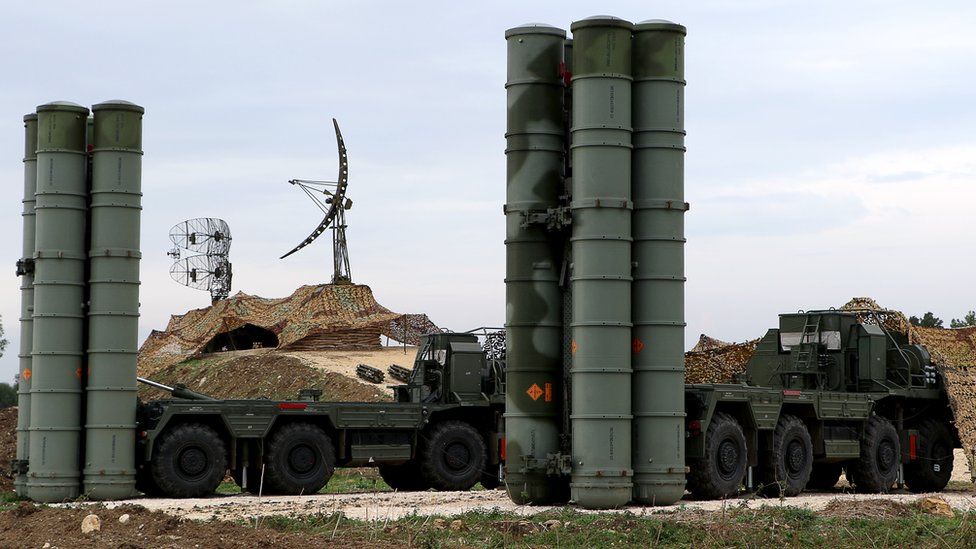
by Ghanwah Ijaz 24 June 2021
Filling Two Needs with One Deed
In military equipment procurement, the Indian Armed Forces are a prime example of chasing the newest, the shiniest, the most remarkable item that everybody says is going to “change the world” without even calculating whether such a state-of-the-art weapon and system would serve its defense requirements. This approach is relatively new in the Indian military sphere, gaining greater credence after an ultranationalist government came to power. It appears that Prime Minister Narendra Modi desires to enhance his country’s military muscle to assert his aggressive policies further to transform his “Greater India” idea into reality.
In this regard, his government has accelerated its military procurement pace to accomplish its ambitions of aggressively modernizing the Armed Forces. In 2018, India signed a USD 5 billion defense deal with Russia for five regiments of its advanced S-400 Air Defense Missile System. Indian defense analysts believe that this weapon system would have a significant impact as it promises to enhance the air defense capabilities of the Indian forces.
Since the deal was signed, it has become a bone of contention between India, Russia, and the United States (US). The deal is a significant irritant for the US since it undermines its interests. In fact, US authorities claim that if India goes forward with the purchase, it will constitute a sanctionable transaction under Section 231 of the Countering America’s Adversaries Through Sanctions Act (CAATSA). However, Russian authorities have termed the US sanctions regime as an illegal tool of pressure and blackmail.
India has clearly put itself in an uncomfortable position with its economic partner (the US) on the one side, and its long-enduring defense partner (Russia) on the other. Realistically, India cannot afford to lose either. Momentarily, it is endeavoring to secure the induction of S-400, while simultaneously seeking waiver from the US sanctions, by exploiting both countries. The following arguments will further attest how India will fill these two needs with one deed by using the false cry of a “Two-Front War.”
“Perpetual Threat of Dual Enemy” Can Earn a “National Security Waiver”
Those well-versed in the subject know that force modernization is an extensive and complex process. However, having problematic borders can calm rough procurement waters. While it is very unusual for an ally state to indulge in defense trade with Russia – a US-declared threat, still, India may be seeking to call the latter’s bluff on the pretext that it is facing a “two-front war.” And hence, it may acquire a “National Security Waiver” from the US.
Like the boy who cried wolf, India may yet convince the world that its security relies on the induction of this new weapon system. Indian authorities will use the embarrassment of Pulwama 2019 and the recent Galwan Valley failures as an opportunity for pushing such a waiver. To convince the US and swiftly slip under from its sanctions threat, India may portray the Russian S-400 deal as a strategic necessity once the missiles are physically on Indian soil.
As a Self-Proclaimed Counterweight to China, India may Continue Demanding US Support
Another dimension of this state-of-the-art purchase is to brand the Indian Armed Forces equal to those of the developed world. To jump up the list of hi-tech countries, India is likely to remain committed to its defense contract with Russia. Simultaneously, under the notion that it is serving US objectives to contain China, India is likely to continue increasing its naval, air, and missile capabilities. As a self-proclaimed counterweight to China, the Indian government will continue to demand that the West should have its back and make New Delhi stronger to “contain” Beijing.
In this regard, there is a likelihood that the US may turn a blind eye to the India-Russia defense deal. India is undoubtedly a pivot and key to the US Defense Strategy in the Asia-Pacific to keep China’s engagements in check. Plus, there is also the possibility that if the US imposes sanctions on India, it may revisit its commitments in QUAD, which might not suit Washington. Hence, the US might swallow this hard pill to avoid sabotaging its interests in the region. While India will never confront China since it is neither capable nor willing, this bogey may help her to get a US waiver.
However, in case the US does turn a blind eye, its sanctions regime would become questionable. Questions regarding preferential treatment of some states (like India), while hard handling of others (like Turkey) may be raised.
Serious Interoperability Challenge
While an expensive undertaking, military technology acquisition gives a decisive edge on the battlefield. However, even in the past, Indian forces’ over-reliance on imported multinational military hardware posed serious interoperability challenges. In this regard, it will be tough for India to integrate American and Russian technologies, as neither side will want to share technical access. And without integration of all the systems, the Indian Armed Forces will not have optimum employment options; instead, the new system may become a handicap.
Conclusion
Although India is nurturing strategic expansionism by increasing its military muscle, there is also a sense of prestige attached to the induction of Russia’s most advanced long-range surface-to-air missile defense system. Distinctive systems like the S-400 will consolidate India’s aspirations to be recognized as the dominant power in the region. However, only under the false impression of a “Two-Front War” and “perpetual threat of the dual enemy”, can India remain committed to its S-400 deal with Russia, and simultaneously sustain close cooperative ties with the US.
